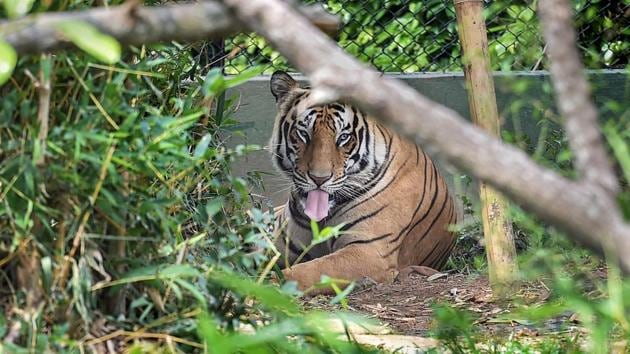The tiger conservation policy needs a paradigm shift
Recent tiger-human conflicts and the persistent demands by affected people to control the animal, is a big challenge in ensuring the long-term survival of the tiger
The tiger is not only our national animal but is also crucial to the country’s food security. Most Indian rivers have either their origin or major catchment areas in forests inhabited by tigers. But by the mid-1960s, the tiger was almost on the brink of extinction due to hunting and habitat loss. The 1968 ban on tiger hunting and 1973 declaration of the setting up of eight prime tiger habitats as tiger reserves helped save this majestic creature. With 50 tiger reserves now, the tiger’s population in India is expected to cross 3,000 this year.

The creation of tiger reserves, with the tiger as the flagship species, resulted in the preservation of many rivers and bio-geochemical cycles essential for maintaining healthy forests. The river’s water — and the minerals and organic manure produced by bio-geochemical cycles — make agricultural lands nutrient-rich and productive. It has been observed that the agricultural lands near the tiger-bearing forests are very fertile. The soil water regime, the mineral and organic soil content of these lands are making the human communities richer and healthier. However, till date, the significance of the tiger in ensuring food security and livelihood for communities has been overlooked as an aspect of tiger conservation The presence of tigers is an indicator of the good health of the forests.
Although we have 50 tiger reserves, there are many other forests which are inhabited by tigers. Legendary conservationist, Jim Corbett, had called the tiger a large-hearted gentleman. And I completely agree with him. In my career of 37 years as an officer of the Indian Forest Service, in which I have encountered this animal 289 times, barring one incident, when I had to recover the dead body of a forest guard killed by a tiger in Corbett, I have never felt threatened by this animal.
Recent tiger-human conflicts and the persistent demands by affected people to control the animal, is a big challenge in ensuring the long-term survival of the tiger. Retaliatory killing of tigers and the demand for its organs are big hurdles to its survival.
The tiger is a territorial animal and fearlessly defends its territory, as the size of the territory decides the availability of food, water and cover. Territorial fights among tigers are common and sometimes lead to the death of weaker ones. The weak and young ones leave the territories to dominant one and venture out to establish a new home in other areas, sometimes more than 300 km away. This is the tiger dispersal phenomenon. Tiger reserves and other non-forest areas work are a source of population and the adjoining forests and other non forest areas work as a sink for the dispersing tiger population. Dispersing tigers use agriculture fields, coffee and tea gardens, degraded forests and river beds to move in a new territory. This leads to conflict with communities dependent on these habitats.
We need a paradigm shift in tiger conservation policies in India. Corridors which allow safe and free movement for dispersing tigers should be a priority. Tigers living outside reserves need attention. We need better surveillance measures, more information gathering and better coordination among states to protect our tiger population. Can we imagine India without tigers?
Digvijay Singh Khati is retired principal chief conservator of Forests and chief wildlife warden, Uttarakhand
The views expressed are personal






